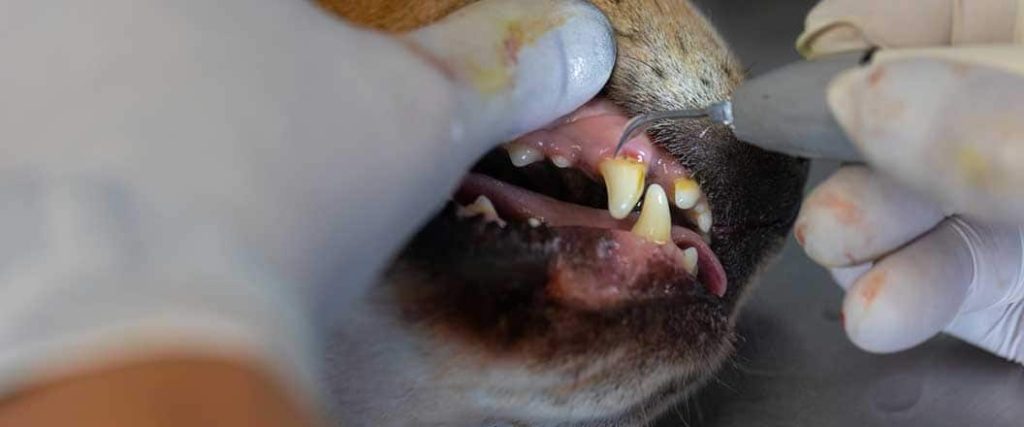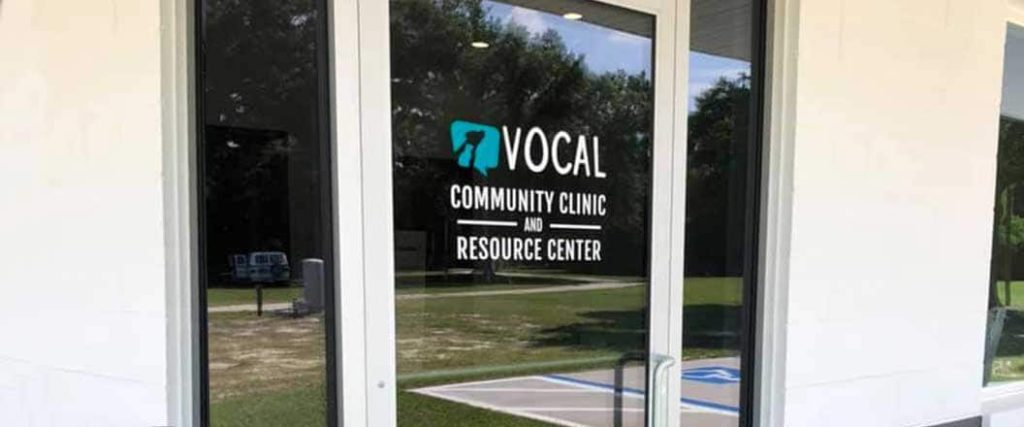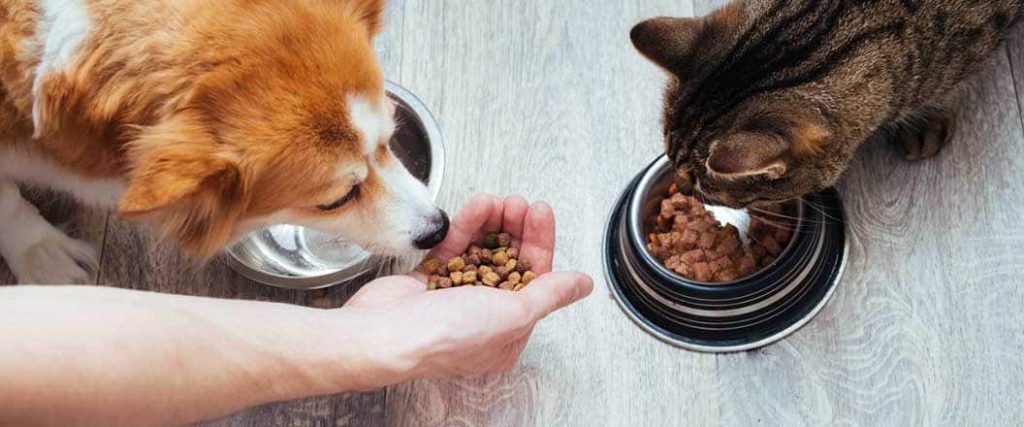Dental Care for Dogs and Cats in Ocala

Dental care for dogs and cats is a major part of a pet’s overall health needs. But let’s be real, most people don’t think about it past commenting on bad breath. Then there is the cost of it. That’s where Ocala’s VOCAL Community Clinic steps in. We offer affordable dental services right here in Ocala as part of our mission to improve animal welfare in the community.
The American Veterinary Dental College warns that poor dental care can lead to bad breath, tooth loss, and gum infections, which can enter the bloodstream and affect vital organs like the heart and kidneys. Neglecting dental care can impact a pet’s quality of life. Regular dental cleanings can prevent many dental health issues.
See how you can improve your pet’s health from the inside out through regular cleanings with a veterinarian and routine dental care at home.
Table of Contents
Why is Dental Care Important for Your Pets?
Many of us have been on the receiving end of a lecture from the dentist with regard to things like missed appointments or flossing. Perhaps you’ve even shown up desperate for relief due to cracked or loose teeth. Such issues can cause immense pain.
Well, your fur babies need their chompers looked at, too. Just like people, poor dental health comes with pain and a host of health issues for pets. Dental care for pets boils down to two types: the kind you do at home and the kind that needs a vet’s expertise.

What Happens When You Neglect Your Pet’s Dental Health?
Skipping the dental routine goes way beyond dealing with bad breath. Imagine your pet trying to chew toys or eat their dinner in pain. If you haven’t been keeping up with their oral care, you might already be seeing such things.
Key issues from a lack of dental care include:
- Gum Disease: Left unchecked, plaque turns into tartar, leading to gum disease. This is painful and can lead to swelling and gingivitis. It impacts teeth and can cause your pet to lose their appetite due to pain when eating.
- Plaque and Tartar: These sticky substances cling to your pet’s teeth and are a breeding ground for bacteria, leading to bad breath and degenerative gum disease. Bacteria are easily absorbed into the bloodstream, leading to more risks.
- Systemic Risks: Bacteria and infections in the mouth end up infiltrating other parts of the body. Major organs, like the heart, lungs, and kidney are often affected through the bloodstream.
Symptoms associated with bad dental health are ticking time bombs. Things like bad breath in pets can be a sign of a greater underlying issue. Ignored for too long, such issues aren’t caught until irreversible damage is done.
Just like in people, those issues can include:
- Diabetes
- Swollen arteries
- Heart disease
- Respiratory infections
The takeaway? Keep your dog’s mouth healthy through routine care, both at home and with a veterinarian.
The Benefits of Regular Dental Care
When your pet does have a healthy mouth, it’s got a healthier overall life. You’re doing more than preventing bad things. You are giving your pet a chance to live his best life for as long as possible.
Strong dental health has been linked with:
- Improved lifespans
- Better quality of life
- Prevention of painful health issues
The fewer complications there are with your pet’s health, the more they can enjoy life. Your pet will be happier, more active, and have reduced risks for serious health problems like those already mentioned.

What Does a Typical Dental Cleaning Involve?
Dental cleaning for dogs and cats isn’t just a glorified brushing session that you could do at home. At least, that’s not the only thing it is. Brushing your pet’s teeth is a great habit. However, just like brushing doesn’t stop us people from needing a dentist, our pets sometimes need a little more.
A dental cleaning done by a veterinarian is referred to a dental prophylaxis. It’s a thorough medical procedure, done by professionals, and involves many of the same tools you’d find in human dentistry.
How is Dental Prophylaxis Performed?
A dental prophylaxis is one of the most common procedures performed by veterinary hospitals. From giant mastiffs to hissing tomcats, the professionals have it down to an art form.
A basic dental prophylaxis has three steps:
- Placing the pet under general anesthesia
- Use of an ultrasonic scaler that allows for easy removal of plaque and tartar
- Final polishing to help slow plaque growth between cleanings
Aside from the use of general anesthesia, a dental cleaning on an animal uses the same skills and tools required with human medicine. However, some pet owners seriously question the use of anesthesia. Is such a drastic step really needed?

Why They Put Dogs To Sleep for Dental Cleaning
Let’s look at dental procedures from the perspective of your pet. A dog or cat, no matter how much they seem to understand us, cannot have a medical procedure explained to them. They truly don’t understand what is being done to them, and as a result, are more likely to become highly stressed.
Putting dogs to sleep, or providing them with a general anesthetic, for a dental cleaning is done to avoid placing the pet in an overly stressful and potentially life-threatening situation.
A pet experiencing high stress levels is more likely to:
- Become aggressive
- Have a seizure
- Experience sudden drops in blood pressure
- Cause themselves personal injury
None of these experiences promote a happier, healthier pet. Some are potentially fatal. In fact, trying to deep clean your pet’s teeth while it’s awake is more likely to cause the animal to associate veterinary staff with fear and pain.
For these reasons, the American College of Veterinary Medicine (AVDC) does not recommend dental cleanings without anesthesia.
This can make every visit to the vet, regardless of reason, a headache for everyone involved.
To avoid that, pets are kept calm as much as possible and given the appropriate amount of anesthesia to keep them unconscious during the course of the cleaning.
Besides avoiding the stress, there are other benefits to doing this:
- Full access to the mouth: This allows technicians to clean even hard to reach areas safely, including the critical areas below the gum line that are home to periodontal disease causing bacteria.
- Pain free: Scalers can sometimes irritate the gum lines, or jostle loose teeth. Sedation prevents pets from feeling the associated pain at that moment.
- No unexpected movement: Veterinarians can work quickly and with greater precision on a pet that is lying still. This is important for delicate operations like teeth extractions.
The faster a procedure can be done, the less time the pet has to spend sedated. This significantly lowers the risks that people often associate with anesthesia. Your pet gets to avoid stress and wakes up with clean and shiny chompers.
If, for any reason, the veterinarian suspects that your pet may react poorly to the drugs required for general anesthesia, they may propose alternatives. There are other medications that can temporarily render your pet unconscious.
These medications come with their own series of risks, including less effective pain management. There is also a greater risk that your pet becomes conscious during the procedure.
If a pet can’t be sedated at all, there are other things you and your vet can try to get your pet’s mouth just a little healthier. We’ll talk more about these in the next section.
Other Common Veterinary Procedures for Dental Health
Apart from regular cleanings, your vet may recommend additional measures to ensure your pet’s oral health is at its best.
This can include:
- Dental extractions
- Radiographs (x-rays)
- Water Additives
- Oral rinses
During a cleaning, a vet may recommend that teeth be extracted, or pulled out. As with humans, one badly infected tooth is more likely to affect others. Removing bad teeth also allows the gum line to heal properly.
In some cases, a vet will recommend x-rays to see if other parts of the mouth, like the bones in the jaw or mandible, have been affected. At VOCAL, we believe performing x-rays with each dental cleaning. This practice gives our vets the best view of your pet’s mouth before they begin any procedures.
Remember that dogs and cats can’t tell us what hurts, they can’t describe pain in a way that helps doctors find problems. X-rays reveal issues below the gum line and give us the best chance at finding minor issues before they can turn into major ones.
The other two items, water additives and oral rinses, are supplements and medications that can be given to pets at home in between cleanings or in cases where a pet can’t be sedated. Our vets can recommend a variety of products if you are interested.
With these, it might be possible to stretch out the time between cleanings, or help you avoid things like extractions at every visit. This is vital for owners of breeds that are more likely to suffer from bad dental issues.
These include:
- Any variety of toy breed
- Brachiocephalic breeds with cramped jaws (i.e., Pugs, Shih-Tzus, Persian cats, etc.)
- Any variety of long-haired dog or cat
That’s not to say that large, short-haired dogs have perfect teeth (they don’t), but it gives you an idea of what to watch out for. It’s also a general guide if you aren’t sure just what breeds make up your lovable, but muttly pooch.
Find Ocala Dental Care for Dogs and Cats
Marion County is home to a wide range of animal lovers. While there’s no shortage of veterinarians, the cost for a dental cleaning at a private practice is out of reach for some pet owners.
At VOCAL, we know you want the best for your pet, but tough economic times don’t make it easy. That’s why the VOCAL community clinic has expanded to help provide affordable dental care to pet families in need.

VOCAL Community Clinic: Your Go-To for Pet Dental Care
At VOCAL, our mission is to improve pet welfare and solve the problem of homeless pets. Early on, we realized that such a mission requires multiple stages.
Our community clinic started with a focus on providing spay and neuter surgeries to help prevent unwanted litters and control stray cat populations. However, we’ve realized that there is so much more that can be done.
This is why our clinic has expanded to include procedures like dental cleanings, as well as other specialty surgeries.
Procedures are performed by qualified veterinarians, and overseen by a mixture of trained staff and volunteers who all have your pet’s best interests at heart.
How to Prepare Your Pet for Dental Procedures?
Once you’ve scheduled a dental cleaning for your pet, there are a few things you can do to help improve their experience and their outcomes.
First among those is to stay calm yourself. Your dog or cat can easily tell when you’re stressed out and may respond in kind. Staying calm keeps them happy and relaxed, and it makes it easier for everyone involved.
Additional practical steps include:
- Fasting: Dogs and cats that are going to be placed under anesthesia should not consume food or water within at least eight hours of a procedure.
- Light sedatives: For pets that do get very nervous with vet visits, a mild sedative, usually in the form of a pill, can be given the night before or even the morning of a procedure.
Remember, the goal is to keep your pet calm and limit their stress as much as possible. A few extra belly rubs or butt scratches can go along way to keeping your pets content and chill.

Post-Procedural Care: What Should You Expect?
After the anesthesia wears off, your pet might be a bit groggy. Staff is monitoring them to make sure things are on track and ensure your pet is comfortable. Even so, some pets will take longer than others to fully recover.
Most are back to their old self within 24 hours. Follow-up meds might be required, especially if extractions were done. Antibiotics and anti-inflammatory medicines help to heal infections and ease recovery.
At home, you can continue to keep them comfortable:
- Ease their stomachs back to eating with a smaller than average portion
- Provide plenty of water
- If extractions were done, softening hard kibble with some warm water can help them eat
The amount of postoperative attention given to a pet will ultimately depend on their reactions and recovery times.
Make VOCAL Community Clinic Your Partner in Pet Dental Health
Taking care of your pet’s teeth shouldn’t be an afterthought—it should be a priority. At VOCAL Community Clinic, we offer affordable dental services to ensure that your pet’s smile remains as bright as your love for them.
Reach out to us at (352) 640-7387 to schedule an appointment and take the first step towards better dental health for your pet.
FAQs
How Often Should Dental Cleaning be Done for Pets?
Most veterinarians recommend dental cleanings for dogs and cats to be scheduled once a year. For pets at higher risk of dental issues, dental cleanings can be performed every six months. Longer or shorter intervals than these should be discussed with a veterinarian.
Is Dental Prophylaxis Safe?
A dental prophylaxis procedure is considered a low-risk anesthetic procedure. With proper precautions in place and a good support staff for the veterinarian, this is considered to be a safe procedure. However, as with any medical surgery, there are inherent risks involved that can’t always be predicted.